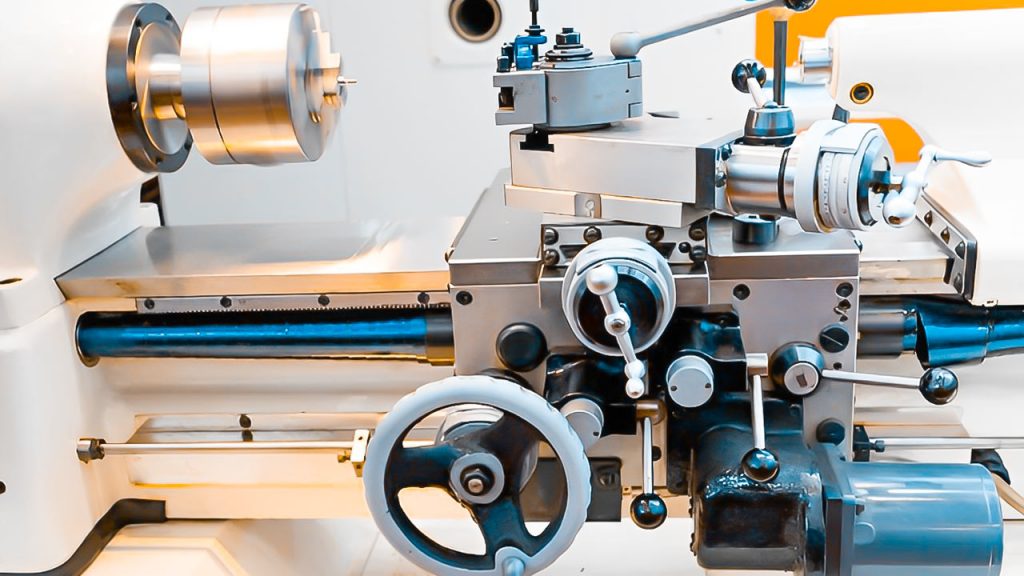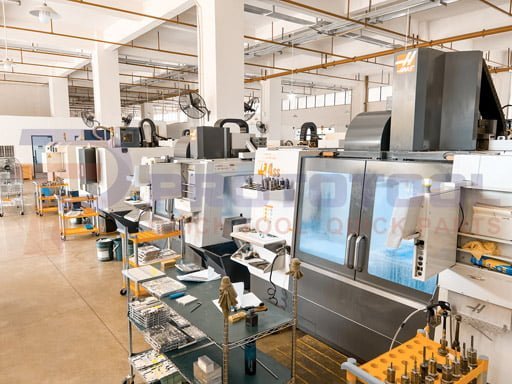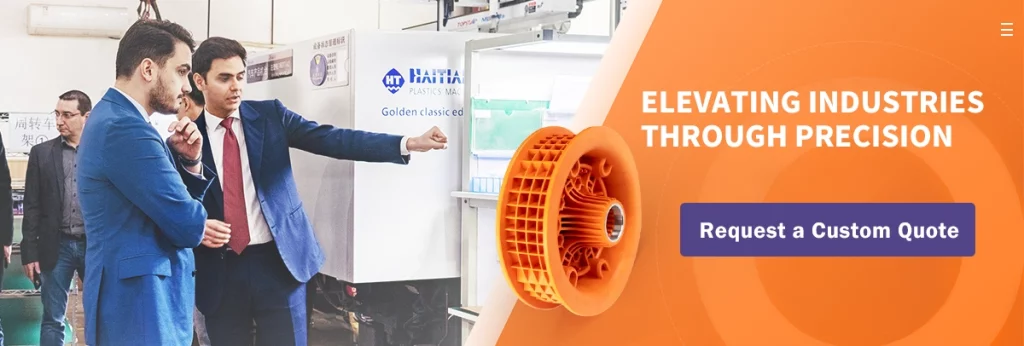A cutting tool, often a non-spinning part of the lathe or turning center, removes material from a rotating rigid material during a CNC turning operation. Depending on the turning processes employed, this technique generates a variety of forms and sizes. CNC turning is one of the greatest methods for producing bespoke pieces from cylindrical bar material. What CNC turning service is, how it functions, who uses it, and how it might help you can be some of your questions. So, let’s go over some of its core processes once more to ensure that you fully get it and get the most out of the entire article.

What Exactly Is CNC Turning?
First, let’s define a CNC before attempting to comprehend CNC turning service. CNC is an abbreviation for computer numerical controls. That is a technical way of describing that the machine digitizes and could automate a large portion of the operation using computers. The machine operator may now enter numbers instead of physically moving to specific spots. As a result, projects may be completed more quickly and with greater precision and consistency.
On a turning machine, the material is removed from a rotating piece of material using cutting tools until the desired outcome is achieved. Parts are typically turned using a CNC lathe. Think of a chess piece to further comprehend how a CNC turning machine functions. It was initially a cylindrical block of material. The block was likely fastened into the chuck of a lathe, turned, and then a pawn was made by tools pushing against the block and removing characteristics.
What Happens at the Turning Station
Wood, metals, or even polymers can be used in a turning station (or lathe). A chuck on a typical turning machine is used to hold the material tightly in place once it has been loaded. Next, the entire chuck rotates at a predetermined and adjustable speed (typically thousands of RPM, but it can be up to 15,000 RPM). Cutting tool positioning and movement are done on the side opposite the chuck. The fact that the material is rotating swiftly, even though it is usually motionless in place, must be made clear. In order to make various cuts and create features, the tool is moved.
A straightforward CNC turning machine will move tools along its X, Y, and Z axes. Live tooling, where the tool may revolve about multiple axes, and the cutting head can even change tools automatically, is a feature of more complex stations. So because cutting tools are significantly more rigid than the material in the chuck, the material will be taken away. The material may be removed in a certain amount by pushing a bladed instrument into it.

The principles of CNC operation:
- A motor that produces either alternating current or direct current controls the movement of the X, Y, and Z axes.
- Using instructions, you may direct the machine’s movement.
- Codes control all operations, such as speed, feed, depth of cut, and so on.
- A different code is supplied for each operation.
- It offers a warning system to protect the different processes and components.
What Benefits Make CNC Machines Offer?
Almost no waste:
The software that controls CNC machines is subject to iterative optimization, which finds the most efficient method to turn a component. These algorithms could also be the topic of simulations, which examine the viability of the controlling scheme before it is implemented. In contrast to the trial-and-error approach to design improvement, the final CAD-CAM model will yield results and offer value from the first cycle.
Furthermore, because all precision milling machines run on repeatable software programs that use set tools along predetermined pathways, it makes efficient use of the raw material available. Thus, most cutting-edge CNC machines can significantly reduce waste and aid producers.
Precision
Having the ability to manufacture components precisely to specifications is one of the main benefits of utilizing CNC milling machines. The danger of human mistakes, which is frequent in manually run machines, is eliminated by CNC mills since they depend on computer instructions to create components. This implies that you may adequately produce complicated pieces with tolerances as low as 0.004mm.
Quick and effective:
Depending on the cutting operation to be carried out, conventional milling machines may require an operator to replace the cutting tools manually. This is not only time-consuming, but it is also ineffective because the operator’s judgment determines how things turn out. It can store up to 30 different tools on rotating carousels that are common in CNC mills. During machining processes, these tools are automatically changed on the spindle, enabling cutting tasks to be completed fast and effectively.
Numerous Material Choices:
Plastics, metals, and composites are all materials that CNC mills are compatible with. CNC mills will have no trouble milling the material as long as you have blocks of it.
Recognizing CNC Milling and Turning Differences:
Although CNC milling and CNC machining are almost interchangeable, CNC turning service frequently yields products more quickly and economically than CNC milling. The cutting tool’s range of motion is the limit for CNC milling. Although CNC turning service is less effective in material conservation, it offers more complicated design possibilities and speedier production.
CNC milling:
CNC milling is a mechanical technology that makes parts or components that are precisely made for each client by progressively eliminating material from the workpiece with rotating, multi-point cutting tools and computerized controls. Typically, these systems have three linear degrees of freedom. While the workpiece stays still, they are free to move in all directions around the X, Y, and Z axes. Milling is better suited for prototype and shorter production runs because of its constrained dimensional operation’s slower processing speed.
CNC turning:
In the production process known as CNC turning service, material bars are held in a chuck and rotated while feeding a tool to the piece to remove material until the required form is attained. Subtraction machining is another name for the process, which involves removing material to create the required form.
If the CNC turning center simply has one turret, all of the work may be done from that side. However, some turning centers contain both the main spindle and a sub-spindle for even quicker operation. This arrangement involves the workpiece being partially machined by the main spindle before being transferred to the sub-spindle to finish the task on the opposite side of the component.
Production Capabilities for CNC Milling and Turning: Applications and Materials
A variety of procedures are among the manufacturing capabilities of CNC milling, including:
- Chemical
- Electrical
- Mechanical
- Thermal
CNC mills’ greater material conservation efficiency throughout the machine’s life results in lower material costs. Complex short-run manufacturing parts, precise parts and components, and prototype parts are all manufactured using CNC mills.
Contrarily, CNC turning lathes are employed for tasks like:
- Boring
- Drilling
- Facing
- Grooving
- Knurling
- Parting
Many industries, including the following, employ CNC milling and turning:
- Woodworking
- Electricals sector
- Machining with electrical discharge (EDM)
- Eliminating metal (in automotive or manufacturing)
- Fabrication of materials
What Can Be Made Using CNC Machining?
CNC machining appears to have no restrictions. Numerous types of metal, plastics, foam, composites, and wood are among the many materials that it is appropriate for. The majority of the more fundamental geometric forms may be produced using 3-axis milling machines. Multi-axis milling centers are an option for items that require additional complexity. A 5-axis CNC milling center, as an illustration, might be helpful. 5-axis machines may additionally rotate the cutting head and the machine bed in addition to the three linear axes of movement seen in the more popular 3-axis machine.
Even though the flexibility is greatly improved, the expense also goes up. CNC is far faster, and hand machining has a position in the business. Particularly suitable for low-volume fast prototyping. However, CNC machining continues to rule the industry when great accuracy is required.
Different CNC Machine Types:
CNC machines don’t just refer to conventional CNC machining tools. To automate a wide range of fabrication techniques, CNC is frequently employed. These consist of the following:
- Laser cutting
- Cutter plasma
- The waterjet cutters
- Flaming objects
- Slam the brakes
- Machines that mill
- Rotating devices
- Routers
- Machines that release electricity, etc.
The automation component is exceptionally advantageous to all of these processes. The accuracy and repeatability of processes are improved, and the human factor in final quality is decreased. All these techniques are covered by the explanation of how CNC machines operate above. The same reasoning holds when using a laser cutting service. For instance, the cutting route is produced automatically.
Nevertheless, some of the additional information, such as the modification of tooling, is not necessary for this procedure, unlike many others. Considering that the same cutting head is adequate throughout the entire operation.
Such equipment can not only increases productivity but also makes your production process more convenient. When seeking CNC machines, Prototool is the best place to go. They will go above and beyond to ensure that using their services is easy and dependable for you.











